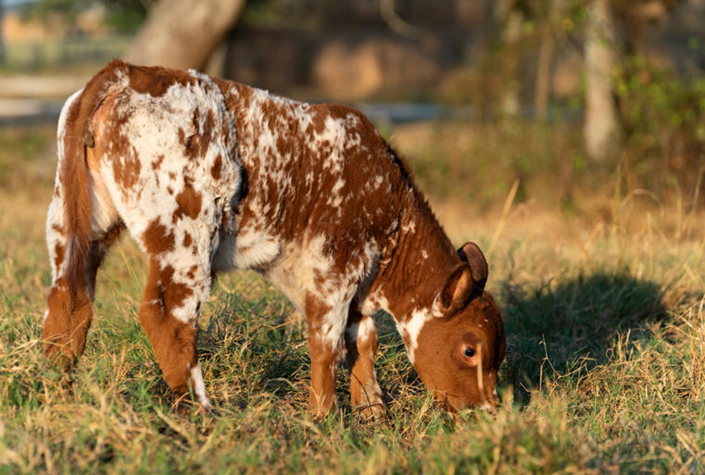From calf to cow: Study examines reproductive inefficiency in beef

Texas A&M AgriLife photo by Laura McKenzie
Calves on the ground eventually mean dollars in the pocket and steaks in the meat case. It’s the basics of the beef industry.
However, reproductive inefficiency costs the beef industry billions every year. Most of that is driven by embryonic mortality and pregnancy loss, said Ky Pohler, an associate professor in the Department of Animal Science and chair of the Pregnancy and Developmental Programming Area of Excellence at the Texas A&M College of Agriculture and Life Sciences.
“We’re conducting a series of studies to evaluate what’s really important to the developing pregnancy,” Pohler said. “We want to determine how much of the loss is coming from the physiology of the animal vs. how much is genetic.”
When a cow loses a pregnancy or undergoes embryonic mortality, the cow may not get pregnant again in that breeding season.
“Beef producers are paid on pounds of calf weaned or a live calf,” Pohler said. “If there is no calf born, then there’s no profit. And the producer’s input costs continue to increase. Our cow-calf operations must get more efficient, or we won’t be able to maintain them.”
A recent $500,000 Agriculture and Food Research Initiative grant from the U.S. Department of Agriculture National Institute of Food and Agriculture will fund Pohler’s project to advance understanding of embryonic mortality and pregnancy loss in the cow.
The project, Physiological Function of Prostaglandins and Pregnancy Associated Glycoproteins in Late Embryonic Mortality in Cattle, is part of a series of studies Pohler is conducting to evaluate various aspects of a developing pregnancy.
Successful completion of the study is expected to provide foundational information on the physiological and molecular mechanisms associated with embryonic survival and mortality in beef cattle. This knowledge will lead to a better understanding of the causes and potential strategies to prevent such reproductive loss, which is causing major economic problems for the beef and dairy industries.
The new grant allows Pohler’s team to study gene knockouts, utilizing the CRISPR/Cas9 technology in cattle.
“You basically knock out a single gene and see what happens with the developing embryo when you do that. Does the pregnancy develop forward, or does it terminate right there?” he said. “We’re excited to start using this technology in our projects to really understand pregnancy and developmental programming.”
Pohler said their study aims to show the impact of a gene family called pregnancy associated glycoproteins or PAGS. These proteins have been known for years; they are the foundation for blood and milk-based pregnancy testing in cattle. The team will remove those genes one by one to determine if they are important to the developing pregnancy.
“We know ways to minimize pregnancy loss,” he said. “But we don’t know how to eliminate it, because we don’t know what the true causes are. This is an opportunity to understand the causes and then develop management strategies specific to those causes.”

